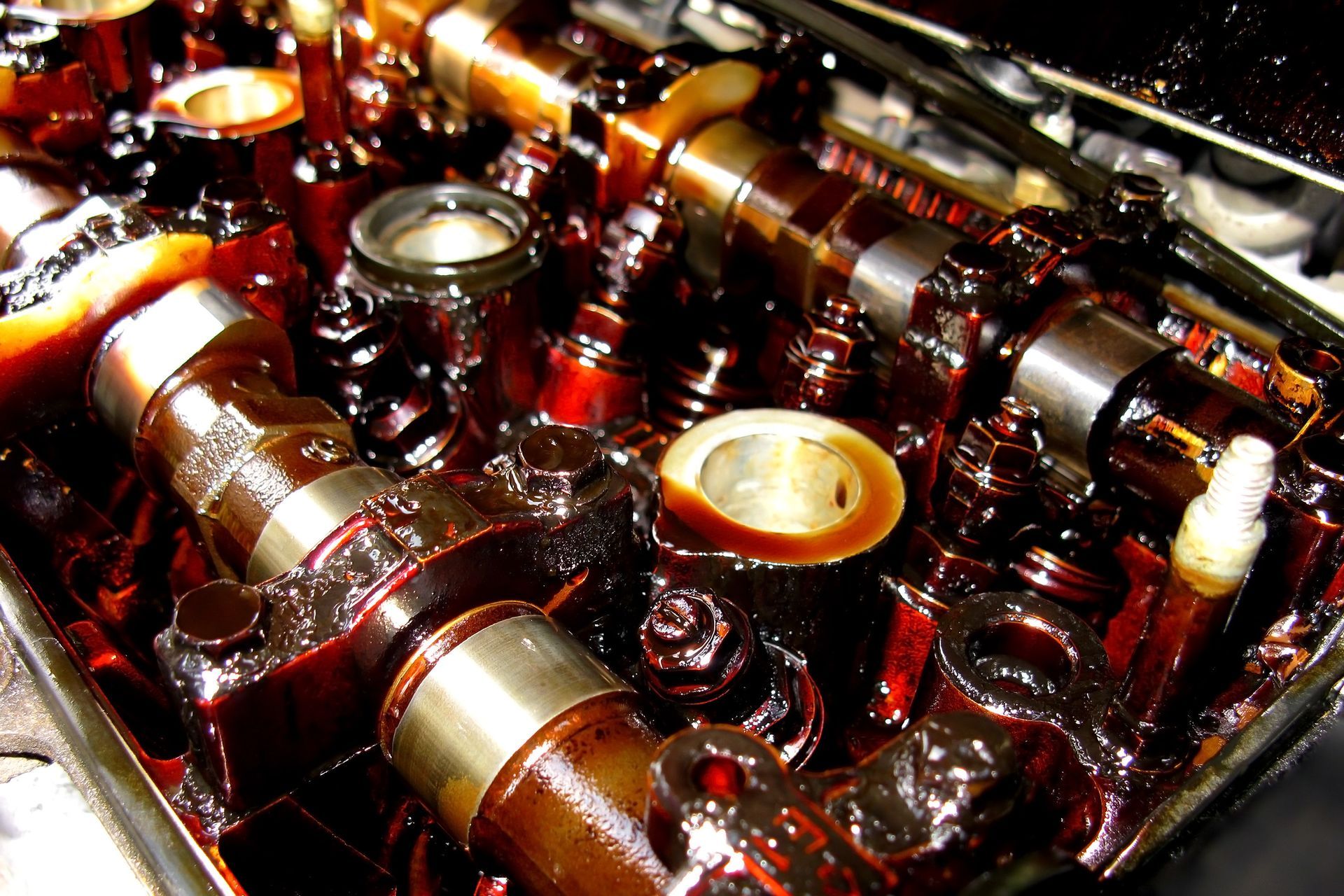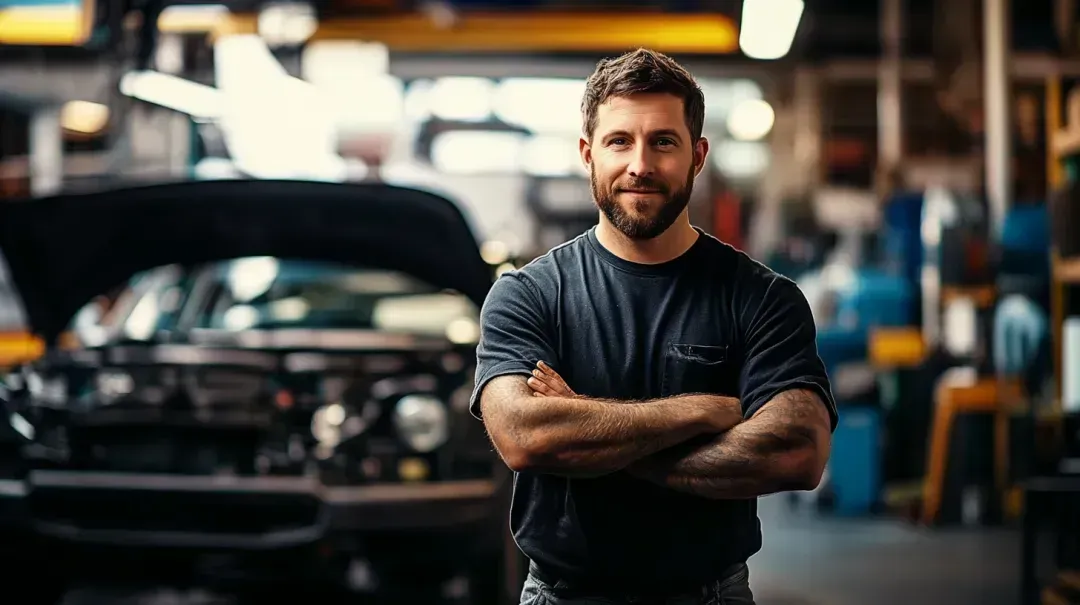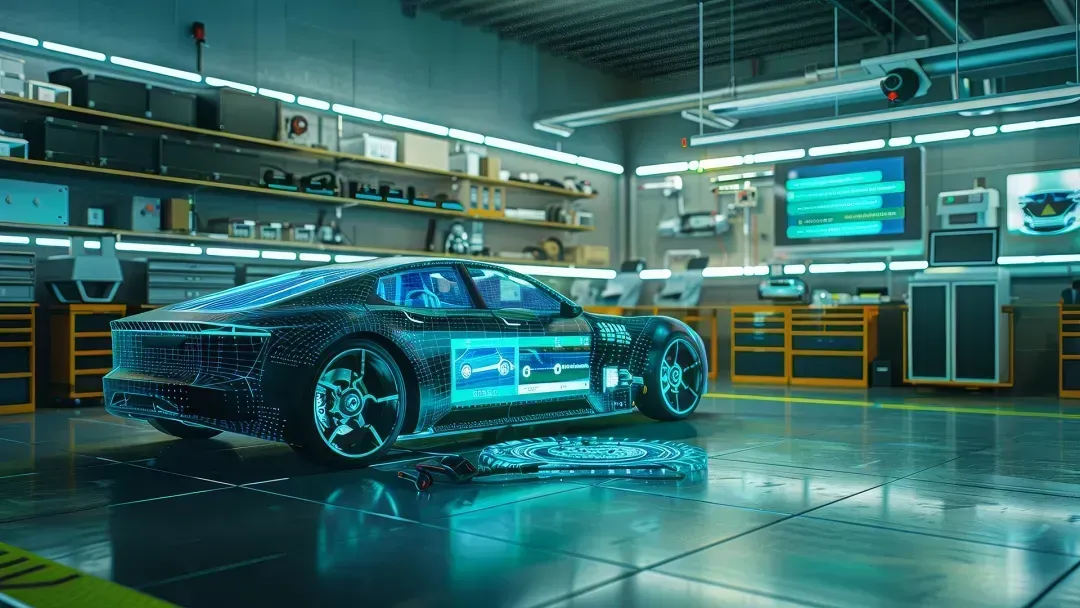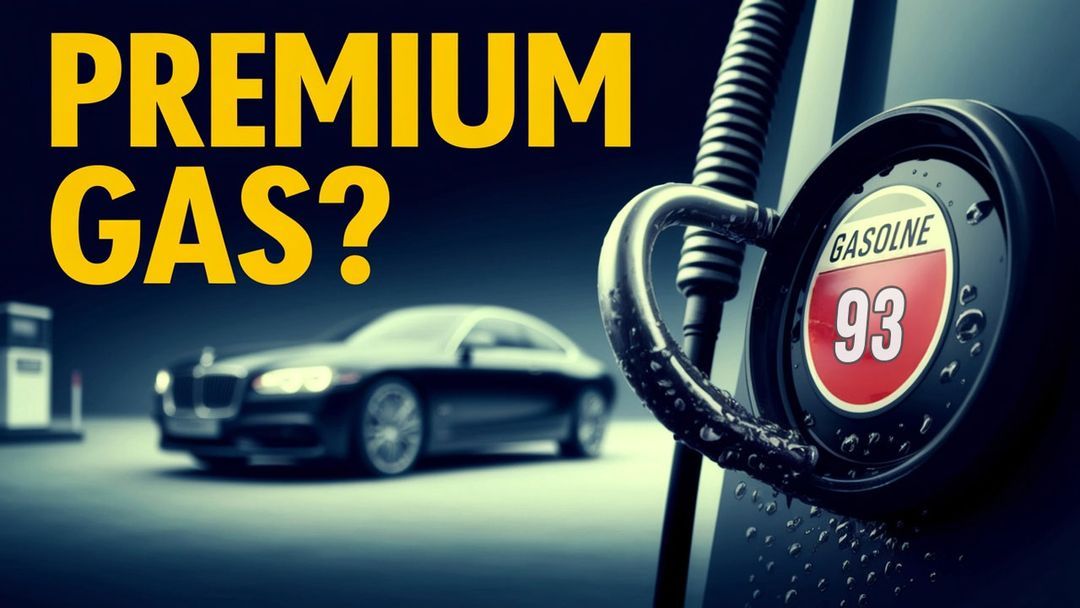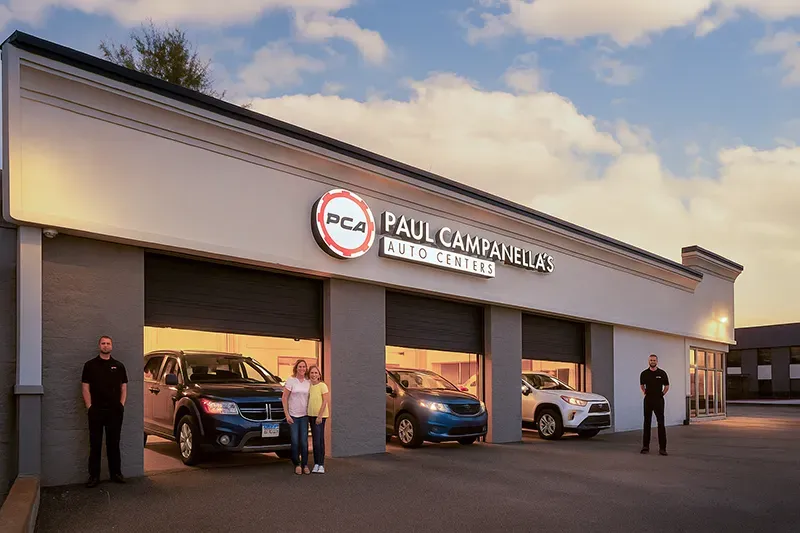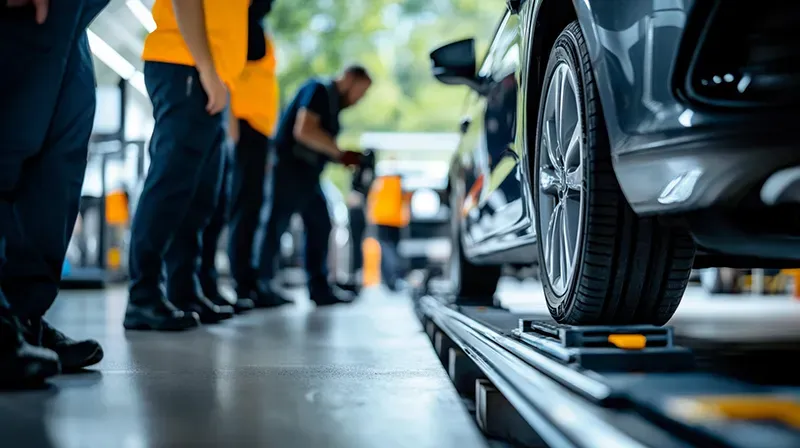Owning a car or truck is quite a financial commitment. Your vehicle needs regular infusions of gas and oil to work, as well as maintenance on a long list of systems and parts in order to run properly. Tires need to be kept at the right pressure. The battery needs to stay charged. Wipers need to be replaced. Headlights burn out. Tail lights need replacing. The list goes on and on.
However, there are ways to reduce maintenance and repair costs over the life of your vehicle. We've all heard stories of a driver who finds themselves stranded, hundreds of miles from home, facing a pricey repair. And in each of these stories, the driver "never saw it coming." But in fact, there are many things you can do to anticipate issues and keep your car or truck running longer. When you carefully care for your vehicle, you can go for years, even decades, without a major repair.
In this article, we discuss some of the most expensive repairs you'll face. We'll also offer preventative maintenance advice to help you keep your car or truck working longer. With a little care and maintenance, you may be able to keep your auto running smoothly for many years to come.
THE MOST EXPENSIVE AUTO REPAIR: Replacing the Engine and Cylinders
No doubt about it, this is the most expensive repairs around. Once an engine has blown, the cost to repair it is in the thousands, sometimes exceeding $10,000. Without repairs, your car or truck will be inoperable. When the cylinders or engine goes, even the most seasoned used car enthusiasts are hard-pressed to rationalize the cost of repairs. That's why a blown engine is often an incentive to buy a new vehicle.
Why is it this repair so expensive? To replace old cylinders, the entire engine block will need to be removed from underneath the hood, and then and put back in place. It often makes more financial sense to replace the entire engine or even to buy a new car. Either way, this is bill is a "worst-case scenario" that you want to prevent.
The good news is that you can usually avoid this repair indefinitely by practicing good driving skills and making sure you keep up to date on essential engine maintenance. While blowing an engine is rare, it pays to understand what you need to do to avoid a breakdown.
Overheating is usually the cause of this kind of sudden and severe damage to the engine. To avoid experiencing catastrophic failure, you need to address seemingly small problems as they arise. Here are some tips to keep your engine and cylinders working better, longer.
TIP: Check Your Engine Coolant/Antifreeze
Overheating can ruin cylinders, warp parts, and cause the engine to stop working. Your radiator and engine coolant are the most important defenses against overheating. This system circulates engine coolant through your engine block using a water pump. Engine coolant is also called antifreeze because chemicals are added to keep it from freezing in cold climates.
The easiest way to keep this system working is to check your levels of coolant/antifreeze about once a month. It's a simple visual check that takes just a few minutes. You simply pop the hood and check the fluid levels in the reservoirs.
Check your radiator's plastic coolant reservoirs to see if the liquid reaches the "Full" line clearly marked on the container. Older cars may require you to remove the radiator cap to check levels. If you're unsure where the coolant reservoir is, check your owner's manual. Every vehicle is a little different.
This video from e-How offers a good tutorial.
WARNING: If you open a radiator cap or the cap of a fluid reservoir while the engine is hot, steam or hot coolant can spurt out, causing serious burns. Wait until the engine has cooled before opening the radiator cap.
Once your engine has cooled, adding antifreeze/engine coolant is fairly straightforward. You can purchase it at most gas stations and convenience stores, or at from any retailer that sells auto supplies. Look for a 50/50 mix of water and coolant. If you do not get a 50/50 coolant, you'll need to dilute it to half coolant and half water. It can be a messy and inconvenient process, so getting a pre-mixed solution is a good idea.
SAFETY TIP: Keep a jug of 50/50 engine coolant in your trunk for emergencies. Replace any unused antifreeze every five years.
When your engine is cool, open the top of the coolant reservoir, and fill until you see it's hit the "full" line. If you don't have antifreeze on hand, or can't purchase it nearby, 100% water can be used in a pinch. Fill your radiator half full of water, and then go to a garage or a store to buy pure antifreeze and the fill the other half with the engine coolant, to create a 50/50 mix.
WARNING: Never add coolant to a hot engine. If you find you need to add more coolant, wait until the engine has cooled down (15 minutes is a good guideline) to avoid the possibility of being burned or cracking your engine block.
Running out of coolant/antifreeze doesn't always cause instant damage, depending on your car or truck. In many newer models, the engine control unit (ECU) often features a safe/limp-home mode, which reduces the risk of damage by firing cylinders in a different sequence. If your car has this feature, you have the option of driving a bit further, even when the engine is overheating, to get home or to a garage. However, even the safe home/limp mode should only be used for a short trip. If you are a long way from a garage, invest in a tow to save the cost of possibly replacing cylinders or rebuilding an engine.
TIP: Check for Issues with Your Radiator
Make sure your radiator is in good working condition. If you find you are refilling the engine coolant often, you may have a leak. As a rule of thumb, if you add antifreeze more than often than you get oil changes, you should have a mechanic check for leaks. A leak can be internal, such as a leaky gasket. External leaks, such as a hose failure or crack in the radiator are more noticeable. When external leaks happen, you will start seeing puddles of coolant when you pull out from your driveway or a parking spot. A leaky or improperly sealed radiator cap can also be at fault. If the cap is loose, it will allow the super-heated coolant to evaporate. If you suspect any of these issues, or if you are filling your radiator more frequently than every 4,000-6,000 miles, have a mechanic examine it for leaks, cracks, or other problems.
Tip: Flush Your Radiator
Over time, antifreeze will break down and lose its ability to cool your engine. To ensure your engine coolant is stable, flush your radiator every 30,000 miles or every five years, whichever comes first. Flushing involves completely draining your radiator of the old fluid and replacing it with new coolant. You can usually request this inexpensive service along with an oil change. It may be a good DIY project if you're handy and have the space to work on a car. This video from Car and Drive r provides a good tutorial.
TIP: Pay Attention to Your Temperature Gauge
Another way to avoid dangerous overheating is to keep an eye on the temperature gauge. This is displayed prominently on any dashboard. In many newer models, a thermostat icon will appear when the engine is hot.
If your dashboard indicates that your engine is overheating, stop the vehicle immediately and let the engine cool down for about 15 minutes. Once the car has cooled, check the engine coolant level and refill if needed. If the gauge stays in the red zone, if the thermostat light stays on, or if that light reappears after you add engine coolant, don't continue to drive. Play it safe and have your car towed to a nearby garage. Driving with a hot engine is the most common reason engines blow or cylinders need to be replaced.
Some newer models feature an automatic engine cut-off feature. Once the cooling system's thermostat reaches a certain point, the car stops and can't be restarted until the car cools down.
TIP: Avoid Oil Sludge by Changing Your Oil Regularly
Regular oil changes protect pistons and prevent your engine from overheating. As oil heats and re-cools over and over, oil sludge develops in your engine. Heated oil transforms over time, resulting in thick, sticky oil that sticks to parts and accumulates in critical areas. Oil sludge can block the proper flow of oil to parts that need it, causing the engine to retain excess heat, leading to damage over time.
You can avoid sludge build-up by changing your oil at the intervals recommended in your owner's manual. If you purchased a used car, or if you have not been diligent about oil changes in the past, your vehicle might benefit from an engine flush treatment. Talk to your mechanic to determine whether your car needs a flush treatment before your next oil change.
EXPENSIVE AUTO REPAIR: Replacing the Transmission
The transmission regulates the power that goes to your wheels, allowing you to go faster or slower. An automatic transmission will shift gears in ways that ensure you can control your speed. A manual transmission, or a stick shift, allows you to choose when to move your vehicle into the next gear using a stick and clutch.
To understand how transmissions work, take a look at this video.
Replacing a transmission is a complicated and expensive repair. Happily, transmissions are built to last, and with care, they can last the life of your vehicle. Here are some tips to extend the life of our manual or automatic transmission.
TIP: Check Transmission Fluids
This fluid keeps the transmission lubricated and prevents overheating. When the fluid is low, the lack of lubrication can cause gears to grind and wear out. It's also important to change the fluid regularly and to use the correct type for your make and model. Checking transmission fluids should be part of a full-service oil change, but talk with your mechanic to make sure this is included.
TIP: Don't be an Aggressive Driver
Accelerating quickly, braking hard, or manually shifting gears aggressively are all ways to wear down a transmission. Popping into drive or park while the vehicle is moving is also hard on the transmission. Drive gently and give your transmission time to shift smoothly to reduce wear.
TIP: Use Your Parking Brake on Hills
When used correctly, the parking brake helps relieve stress and tension on the transmission and other drive components. This is especially true if you have a manual transmission. (It also protects your car from rolling down hills.)
EXPENSIVE AUTO REPAIR: Replacing the Suspension
If you need to replace your vehicle's suspension, you are facing a repair that will cost thousands of dollars. Your vehicle's suspension is made up of hundreds of parts, and different types of transportation use different suspension designs. But all suspensions are designed to keep the vehicle off the ground, absorb road shocks, and allow the driver to turn easily. If your suspension system is compromised, not only will it affect the quality of your ride, but it will also dangerously impede your ability to turn or control the car. And repairs to the suspension can be pricey.
Signs of a compromised suspension system include changes in your ability to control the vehicle, including drifting or pulling during turns. You may notice a rougher ride or hear knocking or rattling as you drive. Worn shocks result in abrupt braking, and you may notice you're thrown forward when you brake. Squealing tires, worn treads, or a bumpy feeling, as if you're driving over an uneven road, are also signs that your car or truck needs prompt maintenance.
However, there are many things you can do to keep your suspension in good shape. While maintenance of the suspension system may occasionally require an investment to replace some parts, these interim steps are a fraction of the more substantial cost of replacing a failed suspension.
TIP: Drive Cautiously
The way you drive and where you drive matters. Every bump and jolt you experience in your car is a stress on the suspension. Some suspensions, especially in trucks, are better designed to cope with bumps. However, bumps and jolts stress all types of suspension over time. To reduce repairs, the driver should drive very slowly over speed bumps, avoid potholes, choose smooth roads over rough roads, and when rough surfaces can't be avoided, drive very slowly.
TIP: Pay Attention to Your Tires
Properly inflated tires absorb shock and protect your suspension system from undue stress. It's important to know that all tires lose air pressure over time, so you must check air pressure regularly. A good rule of thumb is to check every 2,000 miles. Since big swings in temperature can also affect tire pressure, take a pressure check when the temperature spikes up or down.
Not sure what your tire's pressure should be? Check your owner's manual. If you've had tires changed, upgraded, or if you're using snow tires, the mechanic that replaced your tires usually places an air pressure sticker on the vehicle's frame near the driver-side door. If you're unsure of the correct pressure for your new tires, consult your mechanic.
Checking your tire's pressure is quick and costs only a few dollars to correct. Proper tire pressure also improves mileage and saves on gas. Most gas stations provide free air pumps, or charge a minimal fee. Not all air hoses have built-in pressure gauges, so it's smart to invest in a good tire pressure gauge and keep it in your vehicle.
While you're checking the pressure, take a look at your tire's tread. The legal minimum for treads is 1/16 of an inch. Check by placing a penny in one of the grooves. If the treads don't cover up any of part Lincoln's head, you don't have 1/16 depth. However, many experts recommend at least 1/8 inch for safe driving. More tread will help you when driving in snowy conditions. Some types of tires require deeper tread. If you’re unsure of how to measure tread on your tires, discuss it with your mechanic.
Watch for uneven wear. Rotating your tires every 10,000 miles will allow your tires to wear evenly. Rotating will also extend the life of your tires and protect your suspension. If you're rotating tires and see that some tires are still wearing faster than others, talk to your mechanic about getting your vehicle aligned.
TIP: Check the Power Steering Fluid and Belt
If you have hydraulic power steering, ask your mechanic to check the fluid level and belt tightness every 5,000 miles (or more often, depending on your vehicle. Check your owner's manual.) If the belt is slipping or the steering fluid level is low, it may damage the power steering system, resulting in an unsafe vehicle.
Tip: Check Bushings and Ball Joints
Brushings are small rubber or polyurethane components that provide cushioning and reduce friction between metal parts on your vehicle. Ball joints are small mechanisms that allow all the components of the suspension to easily move up and down or side-to-side. During every oil change, your mechanic should check every bushing and joint for wear or damage. While most modern vehicles have sealed joints, in older models, these may need to be lubricated periodically. Inspection and joint lubrication should be a standard part of any wheel alignment or full-service oil changes, but always ask to make sure.
TIP: Maintain or Replace Shocks and Struts
Shock absorbers smooth out bumps and vibrations and help control the movement of your vehicle's springs and suspension. They also help your tires stay in contact with the road surface, which allows you to steer and brake safely. Struts provide the structural support for the suspension and are also essential for safe steering and braking.
Checking shock absorbers and struts should be a part of a full-service oil change. As a rule of thumb, shocks and struts should be replaced every 50,000 miles, but this will vary significantly based on how you drive, the types of surfaces you drive on, and your make and model.
EXPENSIVE AUTO REPAIR: Replacing Battery
If you wait until your battery is dead, you may be facing a costly repair. Since a car with a dead battery can't run, it will require towing. If your battery dies over the weekend, you may lose the use of your vehicle. If this happens to your over the weekend, you may also incur rental car fees while you wait for repairs.
TIP: Understand the Expected Lifespan of Your Battery
There are many types of batteries and some last longer than others. When looking for new batteries, there aren't many bargains to be found. Cheaper purchases usually don't last as long as more expensive options: you generally get what you pay for.
In older makes and models, you'll get many warning signs of an aging battery. Your car won't start quickly, or you may have to pump the gas a bit to start the engine. But in newer models, there are few warnings. In newer vehicles, if you see just one quick flicker of battery light, it might be the only indicator you receive that the battery is near failure. Many new car owners find their batteries fail without notice. That's why it is smart to be proactive and change out batteries once they are no longer under warranty. If you have a two-year warranty, change your battery every two years. If you have a five-year warranty, change your battery every five years.
TIP: Keep Hybrid Batteries Charged 40-80 percent
If you have a hybrid vehicle, you know that these expensive batteries are meant to last for many years, but you can still do things to extend their life. Meticulous maintenance not only keeps your hybrid fine-tuned, but it also prolongs the life of the pricey battery as well. While a full discharge or full charge won't immediately harm these kinds of batteries, keeping it charged at 40 – 80 percent is recommended to extend the life of a hybrid battery.
TIP: Check the Alternator
A spinning alternator keeps the battery working. The spinning is made possible by a belt running from the pulley on the alternator to the crankshaft. If the belt, or alternator, is not working, the battery will die quickly, or not work at all.
When a battery light appears, it may be signaling an issue with your alternator. If your battery is new and in good working condition, or if you hear squealing, ask your mechanic to check your alternator and alternator belt.
Other signs to look for are dimming lights, lights that don't turn off completely, an engine that is difficult to start or requires more than one try to start.
EXPENSIVE AUTO REPAIR: The Head Gasket
When your car or truck is running, fluid from the cooling system is circulating around the engine to protect it from overheating. As gaskets go, the head gasket is probably the most important within a car. Its job is to seal the combustion chambers and the coolant and oil passages between the engine block and the head. These are critical areas to keep sealed. The when unwanted fluids enter a cylinder or the oil supply, it can result in engine failure. A head gasket is usually quite sturdy and designed to never fail or need replacing.
If the head gasket cracks, engine damage will occur. If you notice any of these signs, you may have a cracked or compromised head gasket.
- Coolant/antifreeze is leaking from below the exhaust manifold.
- Your vehicle's exhaust is white.
- The engine is overheating.
- You see bubbles in the engine coolant reservoir.
- You're changing out coolant/antifreeze often, but radiator and hose are intact.
However, if you take good care of your vehicle and follow these maintenance tips, you may never have to deal with a damaged head gasket.
TIP: Take Care of Your Radiator
As discussed earlier, it’s important to check your coolant/antifreeze often, use a 50/50 mix of engine coolant and water, and flush your radiator every 30,000 miles or every five years, whichever comes first. Overheating is the most common cause of warping or cracking head gaskets.
TIP: Warm up Your Engine
Wait for the engine to warm up thoroughly before taking your vehicle to full speed. Your temperature gauge should move off the "cool" reading before you accelerate quickly. You can warm up an engine by driving slowly and carefully for the first five miles. If this isn't possible, let your car run idle for five minutes before you begin driving. If you over-rev a cold engine, you'll stress the head gasket, which over time can result in gasket failure as well as cracks in the head itself.
This video explains why warming up your engine is a good idea.
EXPENSIVE AUTO REPAIR: The Timing Belt
Most modern vehicles are equipped with a timing belt, a critical component tasked with keeping a car's camshaft and crankshaft turning at a synchronized rate. This enables your engine to run. There are no real "symptoms" of a worn belt, and they often snap unexpectedly, leaving you stranded with a heavy repair bill. Snapped timing belts can also result in damage to other parts of the engine.
TIP: Replace the Belt as Recommended by Your Vehicle Manufacturer
Most timing belts should be replaced every 100,000 miles, but recommendations vary by the make and model. Replacing the timing belt can be pricey, but it's the only way to can avoid the much more costly repairs when the timing belt is broken. While it may feel unnecessary to replace a part that appears to be working perfectly, this is one preventative repair you need to do.
EXPENSIVE AUTO REPAIR: The Fuel Pump
As its name implies, the fuel pump is responsible for pumping the gasoline to the carburetor. Problems with your fuel pump will cause significant performance issues with your vehicle and may prevent your car from starting. As a rule, fuel pumps are tough and durable. With proper maintenance, should last for the life of your vehicle.
Noise coming from your gas tanks is a common symptom of a failing fuel pump. A faulty pump may make it harder to accelerate, or you may notice a big change in your fuel efficiency.
Following these maintenance tips should keep your fuel pump working properly for years to come.
TIP: Change Your Fuel Filter
Fuel filters keep out impurities. If the filter is old or clogged, it makes the fuel pump work harder, and may even cause it to fail. On older model cars, it's smart to change your fuel filter every 30,000 miles or every two years. Newer models may need changes less often. Check your owners' manual for guidance or talk with your mechanic.
TIP: Keep Your Gas Tank at ¼ or Fuller
Letting your gas tank fall below ¼ of a tank makes your pump work considerably harder. Keep the tank fuller to extend the life of your fuel pump.
EXPENSIVE AUTO REPAIR: Replacing the Rotor
Did you know that the large metal discs visible behind the wheels of your car are your brake rotors? They spin with the wheels, and when you push on the brake, brake pads clamp down on the rotors to stop the wheels. This friction causes tremendous heat, and the rotors are designed to dissipate that heat quickly. A warped rotor is not actually twisted or bent. Instead, the edges have become jagged, pitted, or uneven. When this happens, braking is uneven, jerky, squeaking, or even unreliable.
When rotors are compromised, they must be replaced, and this gets expensive. In most new cars, each wheel has its own rotor, so you may only need to replace one or two. The more you have to replace, the most expensive the repair becomes. However, if you follow our advice for proper maintenance, you may never need to repair a rotor.
TIP: Replace Your Brake Pads
Rotors are made of harder materials than brake pads, so when you brake, the pad slows the rotor, and all the wear occurs in the pads, not the rotor. If you don't replace worn pads , they are unable to absorb the friction, and the rotors begin to get small chips and dents. That's why you need to change your brake pads regularly. How frequently you change your brake pads will depend on your make and model, how large your vehicle is, how aggressively you drive, and how hard and how often you brake. For example, Formula One drivers have been known to go through brakes pads in minutes. Conservative drivers can safely use the same brake pads for years.
If your brake light comes on or if the car behaves unusually when you brake, get your pads checked in the next few days. If you hear squeaks, clicks, or screeches, get your pads checked immediately.
TIP: Drive Conservatively
Less braking means less wear on your brakes and your brake pads. When you drive slowly and allow your vehicle to coast instead of break, you'll reduce the need to break, and minimize wear on your brake pads. Slower driving will reduce the need to brake hard. The more your car or truck weighs, the harder your brakes have to work, so don't carry heavy purchases or items longer than needed.
EXPENSIVE AUTO REPAIR: Camshaft Replacement
A camshaft opens and closes the valves of an engine. Cars can have one, two, or four camshafts. They're usually located behind the cylinders of your engine. Camshafts are incredibly complex and vital to the performance of your engine. That's why a camshaft replacement can cost thousands. But you won't ever need a replacement if you practice a little preventative maintenance.
TIP: Check the Camshaft Sensor
Most camshaft issues are actually a false reading from a faulty sensor. Sensors sometimes need to be replaced.
TIP: Get Regular Oil Changes
As noted earlier in this article, regular oil changes protect your engine and cylinders. But did you know they also safeguard the camshaft? Change your oil at the recommended intervals to keep your engine running smoothly, and to avoid severe overheating, which can warp your camshaft over time
TIP: Don't Cheap Out on Gas
For some high-performance vehicles, using low-grade gasoline can affect the operation of the camshaft. Your owners' manual will specify the type of fuel you should be using. Follow the manufacturer's recommendations, and never substitute a lower-octane fuel.
An Ounce of Prevention is Worth a Pound of Cure
Your car is full of mechanical features, and some can wear out on their own over time. However, you can extend the life of many of your auto parts with diligent maintenance. And by replacing some parts at recommended intervals, you'll avoid fails completely.
It may not sound very exciting, but the lesson here is to read your owners' manual and take note of recommended maintenance and replacements. Use the recommended oils, fuels, coolants, and fluids, and watch their levels. Take it easy on your car, warm it up before you drive, drive carefully, and avoid bumps. Become familiar with your vehicle and take responsibility for ensuring it's a safe and reliable vehicle.
While you should do many preventative activities on your own, creating a good relationship with a trusted mechanic is helpful. By patronized one trusted mechanic, you'll have a partner who will help you track maintenance issues and have a service record to help you keep track of intervals between service. Your can rely on your trusted mechanic to help you spot potential issues early on.
If you’re in the Wilmington Delaware area, Paul Campanella's Auto & Tire Center is a great place to get the car maintenance you need or the urgent repairs that will get you back on the road. We can offer you the best auto repair and services while providing unmatched customer service from knowledgeable mechanics and friendly staff. Stop in at our Pike Creek, on Limestone Road, or West 28th Steer locations today! Or you can contact us to schedule an appointment .



